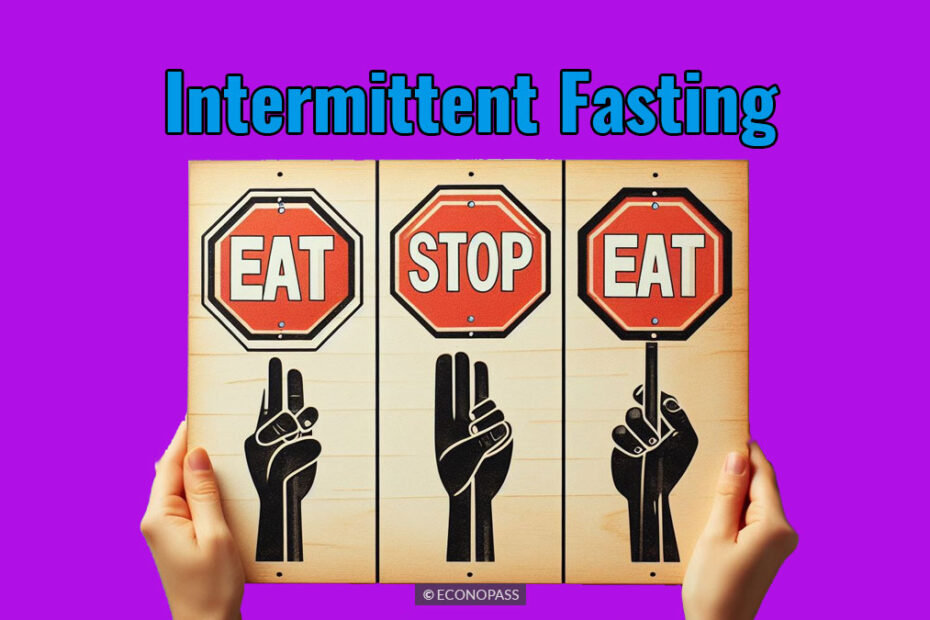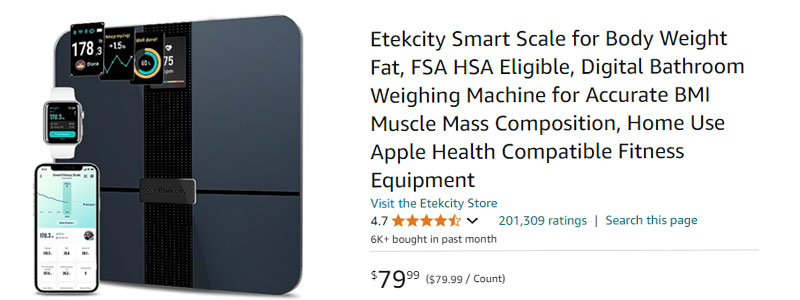Table of Contents
Are you Looking for an intermittent fasting protocol that offers both flexibility and potentially accelerated results? The Eat-Stop-Eat method may be the approach for you. This strategy involves a full 24-hour fasting period 1-2 times per week, allowing you to eat normally in between those prolonged fasts.
But can you really go an entire day without food? And is it really safe and/or effective for weight loss? This guide breaks down everything you need to know about Eat-Stop-Eat, from the science behind it to practical tips for making it work.
The Eat-Stop-Eat Basics
The Eat-Stop-Eat intermittent fasting method involves:
- Fasting completely for 24 hours once or twice per week
- Eating normally during the eating windows
- No calorie restrictions on non-fasting days
For example, you could stop eating after dinner at 7pm one day, fast through the entire next day, and break the fast with dinner again at 7pm – a full 24-hour fasting period.
During the fasts, you cannot consume any calories. However, calorie-free beverages like black coffee, tea, and water are permitted to stay hydrated.
Eat-Stop-Eat was popularized by fitness expert Brad Pilon and stands out from other IF methods due to the prolonged, consecutive fasting times.

The Science Behind 24-Hour Fasts
While a full day without food may seem extreme, fasting has been practiced for centuries and research shows it may provide some powerful benefits:
– Enhanced Fat Burning After 12+ hours of fasting, our bodies deplete glucose stores and shift to burning fat for fuel.
– Improved Insulin Sensitivity Periods of fasting can help increase insulin sensitivity, allowing more efficient use of body fat.
– Reduced Oxidative Stress & Inflammation Fasting has been shown to reduce oxidative stress and inflammation at the cellular level.
– Potential Longevity Boost Animal studies suggest fasting may prolong lifespan by initiating cellular repair processes.
Of course, fasting alone doesn’t guarantee weight loss. Creating a sustainable calorie deficit through the combined fasting and eating cycles is still key.
Getting Started with Eat-Stop-Eat
Transitioning into 24-hour fasts takes some adjusting, especially for intermittent fasting beginners. Here’s how to practice this fasting safely:
- Weeks 1-2: Try 12-16 Hour Fasts Get comfortable with shorter overnight fasts of 12-16 hours to prepare your body.
- Week 3: Do Your First 18-20 Hour Fast Extend your overnight fast by skipping breakfast and eating your first meal in the early afternoon.
- Week 4: Attempt Your First Full 24-Hour Fast You’re ready for Eat-Stop-Eat! Stop eating after dinner, fast completely for 24 hours, then eat dinner again the next night.
- Weeks 5+: Find Your Eat-Stop-Eat Rhythm Aim for 1-2 full 24-hour fasting periods per week, eating normally on non-fasting days.
Start with the full 24 hours only once per week at first. Stay hydrated, get plenty of rest, and ease into this routine slowly.

Sample Eat-Stop-Eat Meal Plan and Tips
While not restricting calories on non-fasting days, it’s still wise to emphasize nutrient-dense whole foods:
Eat-Stop-Eat Sample Schedule Monday: Eat normally, Tuesday: Begin 24-hour fast after dinner, Wednesday: Breakfast with dinner (Repeat once later that week if desired)
Sample Non-Fasting Day Meals:
- Breakfast: Veggie omelet with avocado
- Lunch: Grilled chicken Caesar salad
- Dinner: Salmon, roasted potatoes, and green beans
Tips for Fasting Days:
- Drink lots of fluids (water, black coffee, herbal teas)
- Go for a walk or keep busy to take your mind off hunger
- Have a small cup of bone broth if hunger is severe
- Consider electrolyte supplements like Lmnt or Liquid IV
- Get plenty of rest, as low energy is common
Potential Benefits of Eat-Stop-Eat
While more research is still needed, potential benefits of 24-hour fasting may include:
✅ Accelerated Fat Loss Longer fasts promote higher ketone production, which may boost fat burning compared to shorter fasts.
✅ Increased Human Growth Hormone (HGH) Fasting has been shown to temporarily spike HGH levels, which supports muscle growth and fat metabolism.
✅ Enhanced Cellular Repair Animal models suggest fasting may trigger autophagy – a process where old cells are recycled for new growth.
✅ Cognitive Benefits Some studies have found that fasting increases ketones, which may provide a brain boost and focus enhancement.
✅ Convenience and Flexibility
Having longer eating windows makes it easier to eat normally and stick to a routine.
Of course, Eat-Stop-Eat can be more challenging than other intermittent fasting styles. Moderation and listening to your body’s hunger/energy cues is wise.

Common Eat-Stop-Eat Challenges
The extended nature of 24-hour fasts presents some unique challenges to be ready for:
- Hunger Pangs and Cravings Having low-calorie beverages ready, going for walks, and distracting yourself can help. Don’t force it if hunger is severe.
- Fatigue and Low Energy Getting enough sleep, doing light activity, and staying hydrated helps, but some fatigue during 24-hour fasts is normal.
- Difficulty Sleeping Keep fasts earlier in the day if fasting into the evening disrupts your sleep cycle too much.
- Muscle Loss Concerns Eat plenty of protein during eating windows and don’t combine Eat-Stop-Eat with intense exercise regimens.
- Social Situations It can be tough turning down offers of food/drink while fasting. Scheduling wisely and letting others know your plan helps.
Consistently sticking to the Eat-Stop-Eat schedule is key. But don’t be afraid to adjust your fasting days or take breaks to make it sustainable.
Eat-Stop-Eat FAQ
Is it okay to have zero-calorie drinks like black coffee while fasting?
Yes, zero-calorie beverages are allowed during the 24-hour Eat-Stop-Eat fasts.
Can I exercise while fasting on the Eat-Stop-Eat plan?
Light exercise like walking is fine, but intense workouts are not recommended during 24-hour fasts to prevent muscle loss and fatigue.
Is Eat-Stop-Eat safe for everyone?
This fasting style may not be suitable for pregnant women, diabetics, or those with certain conditions without medical supervision. Check with your doctor first.
Where can I find additional resources about this plan besides Econopass?
You will find them here, we selected for you:
– “What is the Eat Stop Eat diet?” (Healthline)
– “The Eat Stop Eat Lifestyle” by Brad Pilon
– “Eat Stop Eat: Review, Benefits, and How to” by Dr Kiltz
Was this Article Helpful?
We hope that you found this article helpful and informative. We are always striving to provide you with the best content and resources to live better during an intermittent fasting period. We would love to hear from you and get your feedback and suggestions.
Please visit our Facebook page and leave us a comment or a message. Tell us what you liked or disliked about this article, what you learned or want to learn more about, and what you want us to write about next.
Your input is very valuable to us and helps us improve our work. Thank you for reading and supporting us.
#EatStopEat #24HourFasting #ExtendedFasting #FatBurningMode #AutophagyBenefits #MetabolicBoost #FlexibleIntermittentFasting #FitnessTips #HealthTransformation #BodyReboot




















